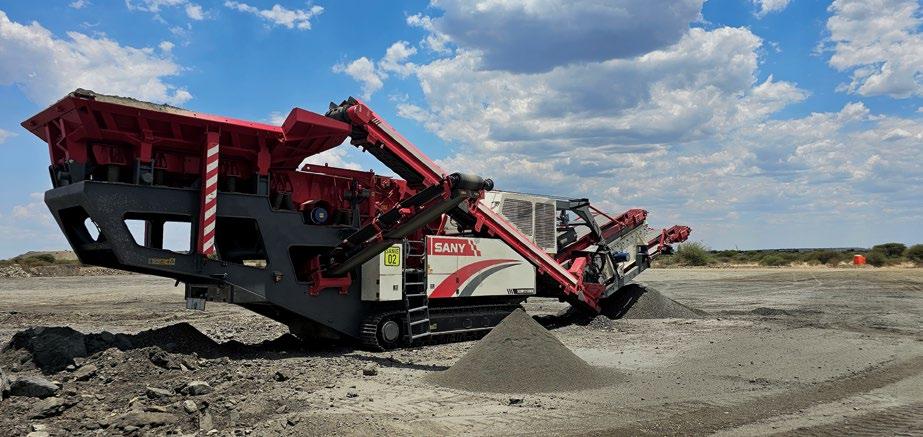Rock Milling: Redefining Landscapes with Precision and Efficiency

Rock milling is paving its way into the mainstream as an innovative solution for transforming rugged terrains into usable, functional spaces. While often misunderstood as simply “breaking down boulders,” this groundbreaking technology serves far greater purposes, revolutionizing industries such as construction, agriculture, and land restoration. If you thought rock milling was just about crushing rocks, it’s time to think again.
What is Rock Milling? Breaking It Down
Unlike conventional methods like blasting or bulldozing, rock milling is a technique that uses specialized equipment to grind down rocks and debris into finer material without significantly damaging the surrounding area. Often used in road building, land clearing, and agricultural preparations, rock milling has gained attention for its applications in improving land usability and reimagining landscapes.
Why Rock Milling Matters
It Promotes Better Land Usability
For farmers preparing tougher soil or developers clearing uneven plots, rocks can obstruct progress, making land less usable. Consider a farmer who struggles to plow an area strewn with rocks, creating hurdles for machinery. Thanks to rock milling, the rocks are ground into fine material, leaving behind a level surface that’s easier to irrigate and cultivate. Similarly, in urban areas, developers turn to rock milling to ensure construction-ready sites.
Tackling Accessibility Challenges
Hilly terrains with rugged rock formations often need extensive leveling before they can host roadways or structures. Rock milling removes this obstacle effectively, offering evenly milled ground that helps make previously inaccessible areas usable.
Supports Environmentally Sustainable Practices
Rock milling turns a problematic byproduct of construction or agriculture into a resource. The finely ground material can be redistributed as a base material for roads or as filler, adhering to eco-friendly land usage practices that reduce waste and minimize material imports.
Industries Benefiting from Rock Milling
1. Construction
From preparing the foundations to constructing roads, rock milling has become essential in construction. A rocky plot can slow down progress, increase labor costs, and demand alternate materials to compensate. However, clever use of rock milling ensures these issues are offset, transforming raw land into construction-ready plots.
For example, contractors working on highway expansions often use rock milling to grade the rocky areas alongside existing roads, maintaining consistency in elevation and reducing overall project costs.
2. Agriculture
Farming rocky ground can present an uphill battle, but rock milling changes the game for the agricultural sector. Grinding troublesome rocks into fine, soil-like material improves land fertility while offering an even terrain for planting.
A farming success story hailing from Texas demonstrates this beautifully. An orchard owner with naturally rocky land faced endless machinery maintenance costs. Through rock milling, the land was leveled and revitalized, leading to record-high yields within the first planting season.
3. Landscaping
Imagine a client wishes to build a serene lake surrounded by picturesque trails, but worries about the undesirable boulders dotting the land. For landscapers, rock milling becomes a canvas for reimagining these environments with precision and adaptability. Trails, parks, and recreational areas see immense improvement when rugged or rocky terrains are smoothed out and made functional.
4. Eco-Restoration
Rock milling also plays a role in environmental restoration projects when it comes to transforming barren land into spaces capable of hosting biodiversity. Its ability to minimize invasive damage makes it a crucial tool where urban environments encroach too near protected natural zones.
The Efficiency and Precision of Rock Milling
Thanks to advanced machinery, modern rock milling is all about precision. It’s not merely about brute force to grind down rocks; it’s an art of strategy where contractors analyze the terrain to carve out an ideal result reliably and ethically. Equipment like milling heads mounted on heavy vehicles ensures consistent grinding without disturbing the surrounding soil or structures.
Advanced sensors offer performance data to operators, monitoring progress in real-time and ensuring every rock-milling job is executed with crystal-clear precision, leaving no room for oversight.
Common Myths About Rock Milling
- “It’s Only for Construction Projects”
This couldn’t be further from the truth. Rock milling has seen applications spanning industries such as land-clearing for wildlife sanctuaries, agricultural use, and even backyard landscaping. Its versatility stands unmatched.
- “It Damages the Environment”
Contrary to this belief, rock milling is an eco-friendly alternative to blasting or chemical-heavy methods. Unlike methods that leave residual damage or impact ecosystems, the finely milled material from rock milling is often repurposed, minimizing waste.
- “It’s Too Expensive”
While there’s an investment in hiring skilled rock milling services, the cost savings from long-term usability, reduced resource imports, and minimized labor make rock milling a smart value-for-money choice.
The Value of Professional Rock Milling Services
Although it’s possible to rent machinery ranging from stump grinders to bulldozers, rock milling requires an expert touch. Hiring professional rock milling services brings the following benefits:
- Experience Matters: Skilled operators assess the terrain professionally, planning strategically for efficient land clearing and leveling.
- Safety First: Rock milling poses risks to untrained individuals due to the high power required to mill rocks. Expert services ensure safety while completing projects.
- Time-Efficiency: Pros with the right tools and training complete complex jobs far more quickly, saving valuable time on large-scale or high-stakes projects.
A Story Worth Grinding For
To highlight the transformational power of rock milling, take a region once deemed unbuildable due to dense and jagged terrain. A real-life project in Colorado involved turning rocky hilltops into a thriving, livable suburb using precision-based rock milling. Today, those homes stand as a testament to the efficiency and foresight that rock milling offers.
Make Your Landscape Work for You
Rock milling offers endless opportunities to transform spaces and boost usability while making eco-conscious decisions for your projects. Whether you’re a farming professional, a construction manager, or someone envisioning a stunning landscape, rock milling offers the tools to provide function and beauty for your land.
Why leave tough terrain unutilized? If you’re considering tackling rocky ground or simply want to ensure your project pushes boundaries, consider consulting rock milling professionals today. Expert support will ensure your transformation is both cost-effective and durable for years to come.






